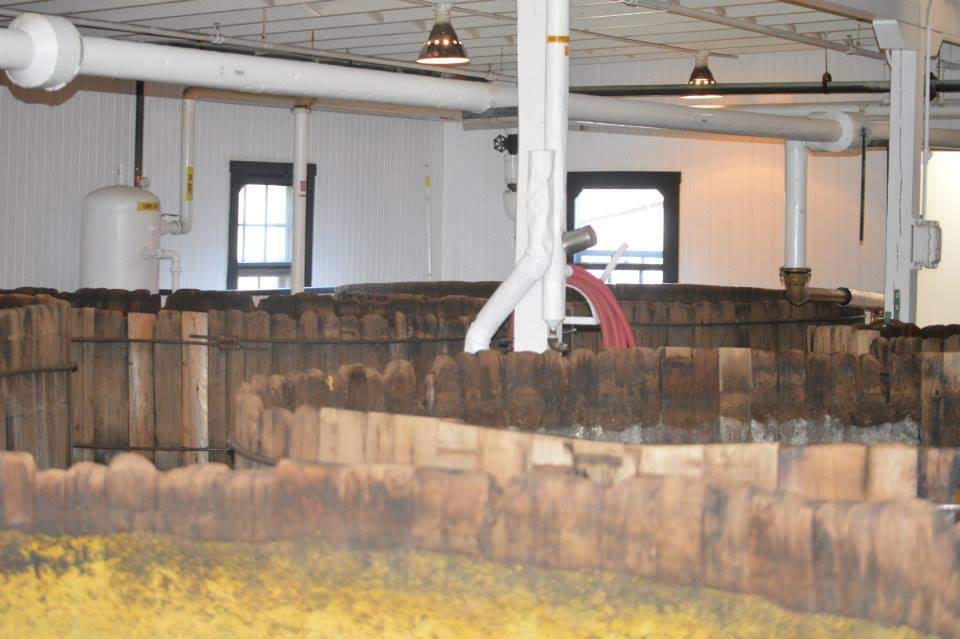Brand Spotlight: Bob and Bill of Four Gate Whiskey Co.
When Bob D’Antoni and Bill Straub launched Four Gate Whiskey Company, they weren’t looking to follow trends. They set out to build something...
2 min read
 Matt Breese
:
May 14, 2025 12:38:37 PM
Matt Breese
:
May 14, 2025 12:38:37 PM

When you sip a glass of whiskey, you're not just tasting a spirit aged in oak barrels—you're experiencing the agricultural story of the grains that started it all. While aging and barrels often get the spotlight, the foundation of every whiskey lies in the grains chosen for the mash bill. The origin, type, and quality of those grains have a profound impact on the flavor, texture, and soul of the final product.
The Foundation: Selecting the Right Grains
Corn, rye, wheat, and malted barley are the primary grains used in whiskey production. Each brings something unique to the table. Corn adds sweetness and body. Rye contributes spice and complexity. Wheat offers a softer, smoother mouthfeel. Barley is essential not only for its malty flavor but also for its enzymes, which help convert starches to sugars during mashing.
In bourbon, for example, the law requires at least 51% corn. But distillers tweak the remaining grain percentages to create a signature profile. A high-rye bourbon will lean spicy and bold, while a wheated bourbon like Pappy Van Winkle offers a rounder, smoother sip.

Cleaning and Quality Control: Grain Prep Before the Mash
Before any mashing happens, raw grains go through a thorough cleaning process. This step removes dirt, rocks, husks, and other unwanted materials. It may seem like a small detail, but any impurities can carry off-flavors through the entire fermentation and distillation process. Clean, high-quality grain equals clean, high-quality spirit.

Grinding and Mashing: Breaking Down the Grain
Once cleaned, the grains are milled to the proper grind size. This varies depending on the grain and the distillery's process. The goal is to break down the grain enough to allow starches to be extracted, but not so finely that the mash becomes gummy or hard to work with.
The ground grain is then cooked with water to create mash. During this stage, heat and enzymes begin breaking down complex starches into simple sugars that yeast can later consume.
.jpg?width=1536&height=1024&name=1588594a-f9f4-4b1b-afa6-b9aef5084df5%20(1).jpg)
Fermentation: Where Science Meets Art
Fermentation is often referred to as the "heart" of whiskey production. The mash is transferred to large fermentation tanks—either traditional wooden vats or modern stainless-steel fermenters. Here, yeast is added to convert sugars into alcohol, releasing heat, carbon dioxide, and an array of flavor compounds.
Fermentation time and temperature influence flavor development. Slower, cooler fermentations tend to encourage the production of fruity esters, while faster, warmer fermentations may highlight more grain-forward or robust earthy tones. However, results can vary based on yeast strain and other environmental factors.

Grain Transparency and the Future of Whiskey
As consumers grow more curious about what goes into their glass, grain transparency is becoming a point of pride for many distillers. Some go so far as to include the exact farm or region where the grain was sourced. Others explore heritage grains, non-GMO varieties, or even estate-grown cereals to create a truly terroir-driven whiskey.
That movement toward grain-forward storytelling is resonating with whiskey lovers. It reminds us that behind every barrel is a farmer, a field, and a seed.
Recently, American Single Malt was officially recognized as a distinct category by the TTB—a move that signals continued innovation and respect for grain-driven expressions. Built on 100% malted barley and often showcasing regional character, American Single Malts are poised to play a larger role in the next chapter of American whiskey.

Conclusion: Every Kernel Counts
Grain isn't just the starting point of whiskey—it's the blueprint. From the fields where corn is harvested to the fermenters bubbling with potential, every step in handling grain contributes to the final character of a whiskey. So next time you raise a glass, think beyond the barrel. Think about the kernels that made it all possible.
Cheers to what’s in your bottle.

When Bob D’Antoni and Bill Straub launched Four Gate Whiskey Company, they weren’t looking to follow trends. They set out to build something...

When bourbon drinkers savor that first smooth sip, few realize how much of the flavor they're enjoying was crafted long before aging began. Deep in...

When you sip a glass of whiskey, you're not just tasting a spirit aged in oak barrels—you're experiencing the agricultural story of the grains that...

Irish whiskey is renowned worldwide as one of the most beloved spirits. Surprisingly, its origins date back to the 18th century when it was initially...

When Bob D’Antoni and Bill Straub launched Four Gate Whiskey Company, they weren’t looking to follow trends. They set out to build something...

When bourbon drinkers savor that first smooth sip, few realize how much of the flavor they're enjoying was crafted long before aging began. Deep in...
Join the conversation
Leave a comment below.